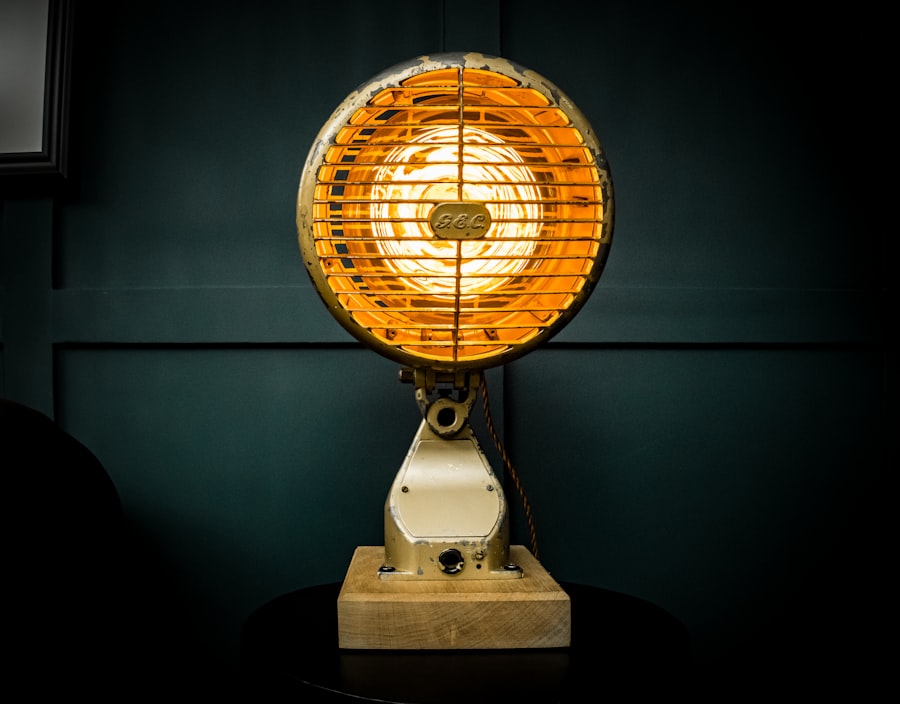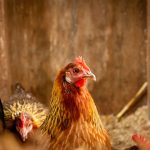A brooder is an essential tool for raising young chicks, providing a warm and secure environment that replicates the conditions provided by a mother hen. The primary function of a brooder is to maintain a suitable temperature for chicks, as they are unable to effectively regulate their body temperature during their first few weeks of life. Brooders also offer a protected space for chicks to grow and develop without the risk of injury from older chickens.
These enclosures facilitate easy access to food and water, ensuring that chicks have the necessary resources for healthy growth. Additionally, brooders protect chicks from predators and harsh weather conditions, giving them an optimal start in life. Brooders can range from simple setups, such as a cardboard box with a heat lamp, to more sophisticated designs like specially constructed brooding pens with temperature controls and automated feeding systems.
Despite variations in design, the fundamental purpose remains consistent: to create a warm, safe, and nurturing environment for young chicks to thrive. Understanding the purpose and importance of a brooder is crucial for anyone interested in raising healthy chickens.
Table of Contents
- 1 Determining the Ideal Age for Transitioning from Brooder to Coop
- 2 Monitoring Temperature and Humidity Levels in the Brooder
- 3 Providing Adequate Space and Resources for Growing Chickens
- 4 Recognizing Signs of Readiness for Transitioning to the Coop
- 5 Considering the Breed and Developmental Stage of the Chickens
- 6 Gradually Introducing Chickens to the Outdoor Environment
- 7 FAQs
Key Takeaways
- The purpose of a brooder is to provide a warm and safe environment for young chicks to grow and develop.
- Chicks should be transitioned from the brooder to the coop at around 6-8 weeks of age, or when they are fully feathered and able to regulate their own body temperature.
- It is important to monitor and maintain the temperature and humidity levels in the brooder to ensure the health and well-being of the chicks.
- Providing adequate space, food, water, and enrichment in the brooder is essential for the growing chickens’ development.
- Signs of readiness for transitioning to the coop include fully feathered bodies, increased activity, and a strong desire to explore outside of the brooder.
Determining the Ideal Age for Transitioning from Brooder to Coop
Feathers: The Key to a Successful Transition
Transitioning chicks from the brooder to the coop is a significant milestone in their development. It is crucial to wait until the chicks are fully feathered before making the transition, as feathers are essential for regulating body temperature and protecting against the elements.
Determining the Ideal Age for Transition
Typically, chicks are ready to move to the coop around 6-8 weeks of age, depending on the breed and environmental conditions. However, it is essential to observe the chicks closely and ensure that they are showing signs of maturity, such as increased independence and confidence.
Avoiding Stress and Health Issues
Moving chicks to the coop too early can expose them to stress and potential health issues, while delaying the transition can lead to overcrowding in the brooder and hinder their natural development. Therefore, determining the ideal age for transitioning from brooder to coop requires careful observation and consideration of the individual needs of the chicks. It is important to remember that each chick develops at its own pace, so flexibility and attentiveness are key when deciding on the right time for the transition.
Monitoring Temperature and Humidity Levels in the Brooder

Maintaining optimal temperature and humidity levels in the brooder is essential for the health and well-being of young chicks. The temperature in the brooder should be kept at around 95 degrees Fahrenheit for the first week, gradually decreasing by 5 degrees each week until reaching the ambient temperature. This gradual decrease in temperature helps chicks acclimate to their environment and develop their natural ability to regulate body heat.
Additionally, it is crucial to monitor humidity levels in the brooder, as excessive moisture can lead to respiratory issues and other health problems for the chicks. Using a reliable thermometer and hygrometer is essential for accurately monitoring temperature and humidity levels in the brooder. It is also important to adjust heat sources and ventilation as needed to maintain optimal conditions for the chicks.
Regularly checking on the chicks and observing their behavior can also provide valuable insights into whether they are comfortable in their environment. By diligently monitoring temperature and humidity levels in the brooder, poultry enthusiasts can ensure that their chicks have the best possible start in life.
Providing Adequate Space and Resources for Growing Chickens
As chicks grow, it is essential to provide them with adequate space and resources to support their development. Overcrowding in the brooder can lead to stress, aggression, and poor hygiene, so it is crucial to ensure that there is enough space for each chick to move around comfortably. Additionally, providing multiple feeders and waterers can help prevent competition and ensure that all chicks have access to essential resources.
Creating a stimulating environment with perches, toys, and hiding spots can also promote healthy development and prevent boredom in growing chickens. Furthermore, maintaining cleanliness in the brooder is essential for preventing disease and promoting overall well-being. Regularly cleaning bedding, feeders, and waterers can help create a hygienic environment for growing chickens.
By providing adequate space and resources for growing chickens, poultry enthusiasts can support their physical and psychological development, setting them up for success as they transition to the coop.
Recognizing Signs of Readiness for Transitioning to the Coop
Recognizing signs of readiness for transitioning from the brooder to the coop is crucial for ensuring a smooth and successful transition for growing chickens. Some common signs that chicks are ready to move to the coop include fully feathered plumage, increased independence, and a confident demeanor. Chicks that are ready for the transition will be more active, curious, and eager to explore their surroundings.
It is also important to observe how chicks interact with each other, as well-adjusted chicks will exhibit minimal aggression and establish a natural pecking order. Additionally, monitoring their eating and drinking habits can provide valuable insights into their overall health and readiness for transitioning to the coop. By recognizing these signs of readiness, poultry enthusiasts can make informed decisions about when to move their growing chickens to the coop, ensuring that they are well-prepared for this next stage of their development.
Considering the Breed and Developmental Stage of the Chickens

Breed-Specific Considerations
When deciding when to move chickens from the brooder to the coop, it’s crucial to consider the breed and developmental stage of the chickens. Different breeds mature at different rates, so researching the specific characteristics and growth patterns of the breed in question is essential. For example, larger breeds may take longer to mature than smaller breeds, so adjustments may need to be made based on individual circumstances.
Assessing Developmental Stage
Considering the developmental stage of the chickens is vital for making an informed decision about transitioning them to the coop. Observing their physical development, behavior, and interactions with each other can provide valuable insights into their readiness for this next stage.
Tailoring the Transition Approach
By taking into account the breed and developmental stage of the chickens, poultry enthusiasts can tailor their approach to transitioning from brooder to coop, ensuring that it aligns with the specific needs of their flock. This personalized approach helps ensure a smooth and successful transition for the chickens.
Gradually Introducing Chickens to the Outdoor Environment
When transitioning chickens from the brooder to the coop, it is important to gradually introduce them to the outdoor environment to minimize stress and ensure a smooth adjustment. This process can involve allowing supervised outdoor time during the day, gradually increasing exposure to natural light and fresh air. It is also important to provide access to a secure outdoor run before allowing full access to free-range areas.
Gradually introducing chickens to the outdoor environment allows them to acclimate to new sights, sounds, and smells while maintaining a sense of security and familiarity. This approach can help prevent stress-related issues and promote a positive experience as they transition from the brooder to the coop. By taking a gradual approach to introducing chickens to the outdoor environment, poultry enthusiasts can support their well-being and ensure a successful transition as they continue to grow and thrive in their new surroundings.
If you’re wondering how long to keep chickens in a brooder, you may also be interested in learning about different chicken coop interior ideas. Check out this article for some creative and practical ways to set up your chicken coop for maximum comfort and productivity.
FAQs
What is a brooder?
A brooder is a heated enclosure used to raise young poultry, such as chicks, until they are old enough to regulate their own body temperature.
How long should chickens be kept in a brooder?
Chickens should be kept in a brooder for approximately 6-8 weeks, or until they have developed enough feathers to regulate their own body temperature.
What temperature should a brooder be kept at?
The brooder temperature should be kept at around 95 degrees Fahrenheit for the first week, and then decreased by 5 degrees each week until the chicks are fully feathered.
What type of bedding should be used in a brooder?
Pine shavings or straw are commonly used as bedding in a brooder. It is important to use a material that is absorbent and easy to clean.
What kind of light should be used in a brooder?
A heat lamp or infrared bulb is typically used to provide warmth in a brooder. It is important to use a bulb specifically designed for use with poultry to prevent any potential hazards.
What should be provided in a brooder for the chickens?
Chickens in a brooder should have access to fresh water, chick starter feed, and a source of warmth. It is also important to provide enough space for the chicks to move around and access to a clean, dry environment.
Meet Walter, the feathered-friend fanatic of Florida! Nestled in the sunshine state, Walter struts through life with his feathered companions, clucking his way to happiness. With a coop that’s fancier than a five-star hotel, he’s the Don Juan of the chicken world. When he’s not teaching his hens to do the cha-cha, you’ll find him in a heated debate with his prized rooster, Sir Clucks-a-Lot. Walter’s poultry passion is no yolk; he’s the sunny-side-up guy you never knew you needed in your flock of friends!







